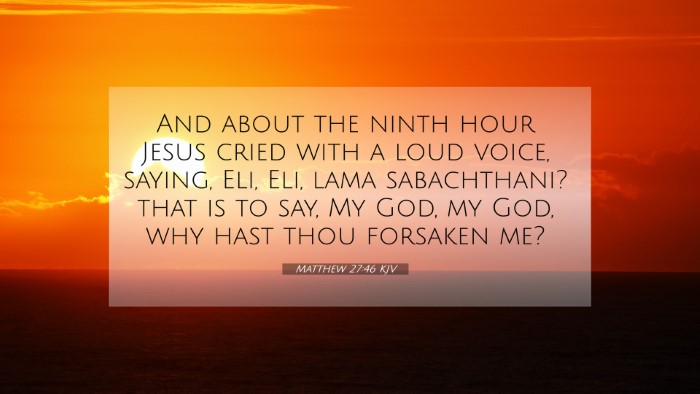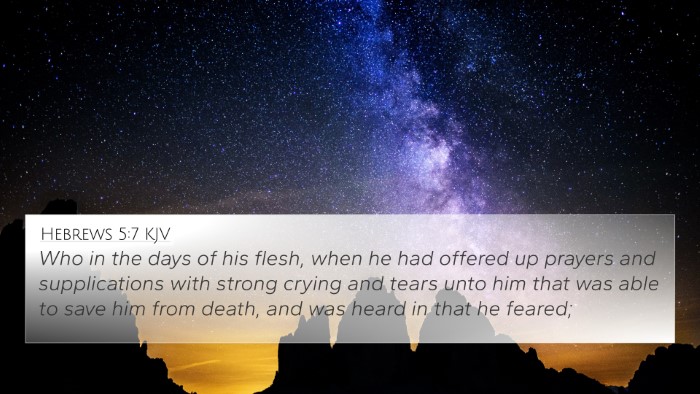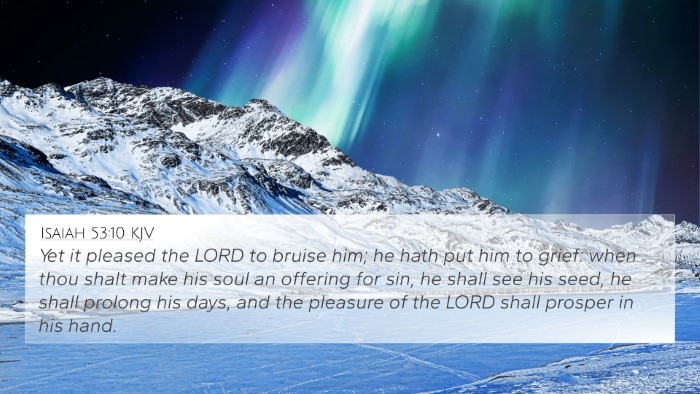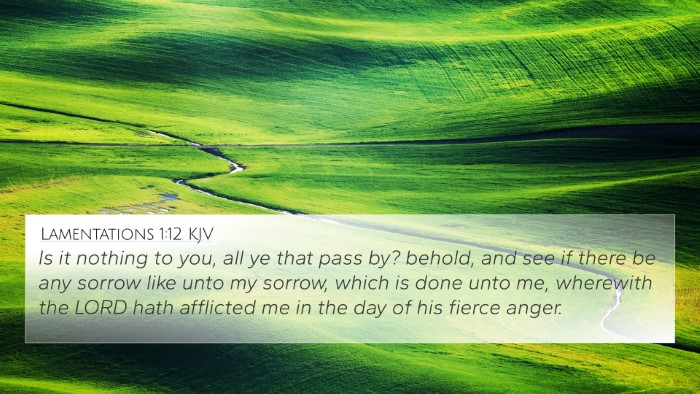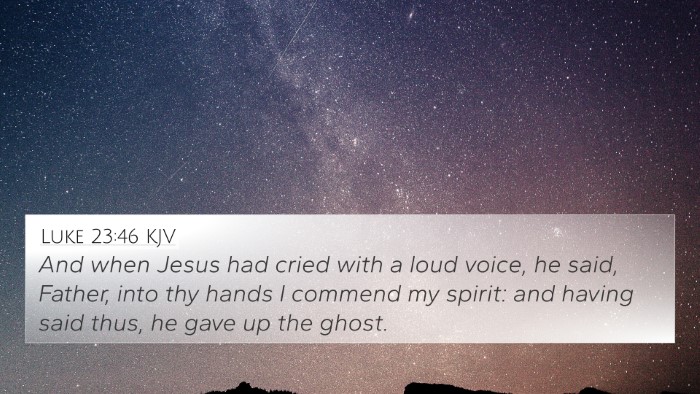Understanding Matthew 27:46
Verse: Matthew 27:46
Content: "And about the ninth hour Jesus cried with a loud voice, saying, Eli, Eli, lama sabachthani? that is to say, My God, my God, why hast thou forsaken me?”
Summary of Meaning
Matthew 27:46 captures a profound moment during the crucifixion of Jesus, reflecting His ultimate anguish and the divine abandonment He felt as He bore the world's sins. This expression of sorrow is a direct quote from Psalm 22:1, anchoring His suffering in the prophetic scriptures and illuminating the theme of Messianic suffering throughout the Bible.
Commentary Insights
Various public domain commentaries provide a rich understanding of this verse:
-
Matthew Henry:
Henry emphasizes the deep emotional pain of Jesus, interpreting His cry as an expression of the weight of sin and the separation it brings between humanity and God. He notes that this moment fulfills Old Testament prophecy and demonstrates the extent of Christ’s sacrifice.
-
Albert Barnes:
Barnes points out that this cry showcases Jesus’ humanity, illustrating that He truly experienced the forsakenness that sin engenders. He cross-references this moment with other scriptural instances where figures felt abandoned, underscoring the common human experience of suffering and alienation from God.
-
Adam Clarke:
Clarke interprets this as a moment that fulfills the scriptural prophecy of abandonment and suffering, connecting it to the theme of Jesus as the suffering servant. He highlights the psychological torment faced by Jesus, suggesting it is the culmination of His earthly ministry and mission to redeem humankind.
Cross-References
This verse is linked to several significant scriptures that enhance its understanding:
- Psalms 22:1: "My God, my God, why have you forsaken me?" – Direct connection, indicating fulfillment of prophecy.
- Isaiah 53:3: "He was despised and rejected by men" – Illustrates the suffering servant theme.
- Matthew 26:56: "Then all the disciples forsook him, and fled." – Highlights the abandonment experienced by Jesus.
- Hebrews 13:5: "I will never leave you nor forsake you." – Contrast with Jesus’ experience of forsakenness.
- Luke 23:44-45: Describes the darkness that fell over the land during Jesus' crucifixion, enhancing the despair of His cry.
- John 1:29: "Behold the Lamb of God, who takes away the sin of the world!" – Contextualizes Jesus’ sacrifice and the weight of sins He bore.
- Romans 8:31-32: Discusses God's love and the assurance that we are not forsaken, in light of Christ’s sacrifice.
Thematic Connections
Matthew 27:46 introduces themes that resonate throughout both the Old and New Testaments:
- God’s Holiness vs. Human Sinfulness
- The Suffering Servant motif
- The concept of divine abandonment and its implications for faith
- The fulfillment of prophecy in the person of Jesus Christ
- The deep emotional reality of Jesus’ sacrifice
How to Use Bible Cross-References
Understanding the context of Matthew 27:46 can be enhanced through effective cross-referencing. Here are some tools and methods for deeper study:
- Bible Concordance: Use concordances to locate similar themes and verses related to suffering and abandonment.
- Bible Cross-Reference Guide: Refer to guides that suggest related scriptures for thematic studies.
- Cross-Reference Bible Study: Engage in studies that analyze how different verses interact with each other regarding similar themes.
- Identifying Themes: Explore how various verses relate to suffering, redemption, and the nature of God.
- Bible Chain References: Create chains of related verses for sermon preparation or personal reflection.
Conclusion
Matthew 27:46 is a profound declaration of Jesus at the culmination of His suffering, filled with deep theological implications. By exploring the connections and cross-references with other scriptures, believers can gain a richer understanding of His sacrifice and its significance for humanity. The interconnectedness of biblical themes reveals the consistent narrative of God’s plan for redemption throughout scripture.


